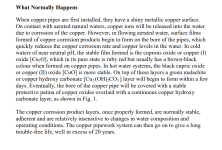Good Morning
After reading through applicable materiel I'm still not sure what is the best course of action.
My readings this morning
FC 5
TC .5
PH 7.4
CH 50
TA 125
Salt 3200
Temp 88
The PH has been 7.4/7.6 all year without adding MA .. surprised me.
After an initial bout of cloudy/tint of green water in May, the pool has been trouble free all year. The water quality has been crystal clear.
Thanks
After reading through applicable materiel I'm still not sure what is the best course of action.
My readings this morning
FC 5
TC .5
PH 7.4
CH 50
TA 125
Salt 3200
Temp 88
The PH has been 7.4/7.6 all year without adding MA .. surprised me.
After an initial bout of cloudy/tint of green water in May, the pool has been trouble free all year. The water quality has been crystal clear.
Thanks





